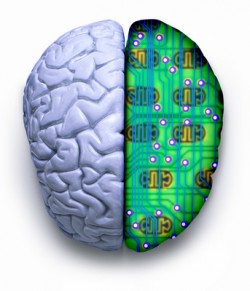May 14
30
Integration of the Mind – Part Thirty-Two
-Learning What Is Important to YOU and for YOU!
How many times have we heard or said: Focus, pay attention! …and, therefore, believing what? On the tip of my tongue or, rather, in this instance, my fingers, I was about to urge: THINK ABOUT IT! What if the cognitive, i.e., the thinking part of the human mental apparatus is responsible for what we call “paying attention?”
One popular diagnosis, given the blame for all sorts of things these days, is labeled Attention Deficiency Disorder (ADD) and in school children called ADHD because they throw hyperactivity into the mix.
Is ADD a real disorder, or merely an interesting point of view? A point of view, that with only a slight change, can eliminate some of the, in my view, debilitating results of such a focus and reliance upon complicated therapies (or prescription drugs) that have been developed to treat it?
People diagnosed with ADD are relieved to be able to blame their “disability” on something, rather than parental neglect or lousy teachers; but what if the ability to focus and pay attention is much overrated in the process of learning anything?
If, as researchers suggest, paying attention is a function of the conscious part of the human mind; and if we factor in something else they also suggest, which is that the subconscious part of our individual minds is literally millions of times more powerful than the conscious part in the ability to process information, isn’t it possible that paying attention and focusing are actually OBSTACLES to the process of learning?
We shall now digress: I consider myself very fortunate because I can visualize or get a picture in my mind, “at will,” you know, deliberately …and consciously. It wasn’t always that way.
About sixty years ago I attended an introductory presentation about the Dale Carnegie training program which was expressly developed for salespeople, a system for memorizing, which after I put into daily practice, greatly improved my ability to remember certain things such as names of people and also the salient bits of information I could use in an oral presentation, so that I didn’t need written or typed notes.
We’ll come back to this point in just a moment to share how, by using a variation of this memory demo in a training system for sales people, which I had designed and sold to corporations around the U.S., I stumbled onto a secret that enabled me to do something that was previously not possible for me – visualize or use “my imagination” in a vividly visual way, again, deliberately. Those of you, who find visualizing difficult, will learn, in just seconds, how to do it effectively and how simple and powerful the skill can be for achieving goals.
I have two favorite and true stories about two very different people. One, a female college student referenced earlier, who walked out of a classroom slamming the door and on the way to an experience that changed her life dramatically;
The second was a lawyer, the husband of one of six members of a group of patients of a psychiatrist. The lawyer also walked out of the room in which the patients and their spouses and I were meeting, thirteen in all, slamming the door saying, “You people really are crazy!” What he had said just prior to that was, “You can believe anything you want!” By which he meant that no matter what we believe it doesn’t change our perception of reality.
As happened with the young lady in the other story, he was soon to have an experience that quickly had him believing what had previously been unbelievable to him.
The following thought just now got my attention …er, should I pay attention to it? Global warming is all over the news, you cannot escape it, even if you don’t read newspapers or watch television. One world news organization took a poll recently and in the sampling of opinion among its audience found that 51% believed the evidence of global warming, 47% didn’t believe it and 2% had no opinion, which just goes to support the lawyer’s point of view, correct? That is, we can believe whatever we want and it doesn’t change anything; or …does it? The answer to that question depends upon who you believe.
What a change in belief did for the two people in the foregoing referenced stories was dramatic …but in both instances it took a personal experience to change their prior conclusions about something.
What a change in belief does do, is change the response of the individual to being open to a whole new set of parameters about many things.
I grew up with a father who repeatedly said, “You can’t teach old dogs new tricks,” meaning that, in my young mind, he was not open to even trying to absorb something new.
His often repeating of this had an opposite effect on yours truly – I learn new tricks every day and I’m going on ninety, hey …maybe what we can learn from that is …I may not be so old after all, isn’t that the way you see it?
The fact is, as my publisher is wont to tell me, “You start off with one theme, then tell one of your stories and the theme you started with gets lost.
I just did that, didn’t I …and we could easily say that it was because I was neither consciously focused nor was I consciously paying any attention to the original theme and that’s the point.
One of the things we’ve been reiterating in this series, Integration of the Mind, and to repeat what we’ve already said above, is that the subconscious parts of the individual, personal minds (comprised of the entire nervous system of these human body-bags we occupy, and of which –Mind– researchers are telling us, the brain is only one part, albeit an important part), is far more powerful than the conscious part. Literally, so they say, the subconscious is millions of times more powerful in the ability to process bits of information than the conscious.
So then, paying attention and focusing, if a function of the conscious part, as a means to learn new information or skills may be the slower method. A book that came into my hands, Silva Mind Control, back in the 1960s certainly confirmed that for me, plus it opened the door to a way to engage the subconscious.
I am not touting what the Silva Method has evolved into today, although I am acquainted, personally, with several people who have had much success by using it and I am aware of countless other quite famous people, whom I’ve never met, who give The Silva Method credit for being a huge part of their initial breakthrough into whatever fame and success they have.
I simply find it too complicated, for me; and the same thing goes for Neuro Linguistic Programming (NLP) …which works for millions of people around the world; I just personally think the promoters of both these and countless other self-improvement systems cram a lot of information into the systems, which may be extremely valuable for some, but bores the dickens out of me.
Both Silva and NLP, as do countless other systems, emphasize the value of visualizing …see, Ryan? We came back to it just as promised and now the story of how I stumbled onto a simple method of visualizing and began sharing it at our training workshops is not lost, just delayed until next time in:
Integration of the Mind – Part Thirty-Three
Can Visualizing Be Learned and Is It Worthwhile?
I’ll see you there . . .




